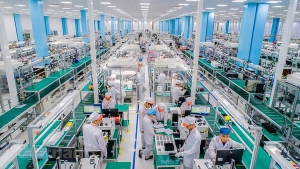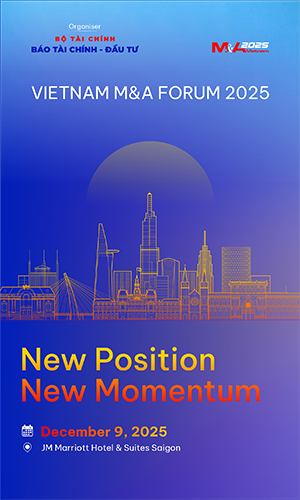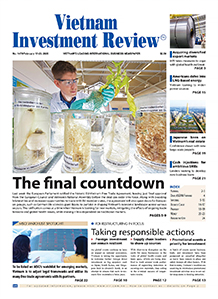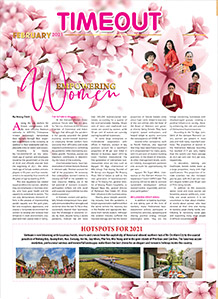Smartphone makers endure latest United States tariff tangle
 |
| Experts say it would be impractical for Apple to relocate manufacturing to the US quickly, Photo: Duc Thanh |
US President Donald Trump on May 23 suggested he would enforce a 25 per cent tariff levy on Apple, Samsung, and other smartphone manufacturers if their devices are not made in the US.
The new tariffs could take effect by the end of June, according to a social media post by the US president.
The potential tariffs have made a big splash in the smartphone industry. Samsung, which manufactures smartphones in Vietnam and South Korea, is now weighing whether to absorb the tariffs or take a more drastic step, such as building a US assembly plant, as reported by newswire The Chosun Daily.
Meanwhile, Apple is stepping up its efforts to diversify the supply chain to India in a bid to navigate potentially higher tariffs in China, its main manufacturing base.
Earlier in May, Apple CEO Tim Cook told investors that iPhones sold in the US would soon be made in India. In mid-May, Apple’s major supplier Foxconn announced a $1.49 billion investment in its Indian unit Yuzhan Technology India, via a London Stock Exchange filing.
Neil Shah, vice president of research at market research and analysis firm Counterpoint Research said, “Relocating Apple’s manufacturing ecosystem to the US in the near to mid-term is not only impractical but also infeasible. Apple’s supply chain is completely Asia heavy around China, India, and Vietnam.”
Even if Apple’s partners start assembling in the US, it would be at least 10-20 per cent more expensive, so it would eventually be as expensive as a 25 per cent tariff, Shah added.
Brian Lee, an economist at Maybank Investment Banking Group, said, Apple and Samsung’s supply chains are deeply embedded in Asia.
“Replicating this supply chain in America will take an extended period of time and may not be feasible, given the much shallower industrial base of component and parts suppliers as well as a shortage of willing and able workers,” Lee said. “Relocating just the assembly portion to the US from India or China will already be a tough sell, given the labour-intensive nature of the business and prospect of tariffs on imported components.”
Such smartphone tariffs are likely to hurt Apple and Samsung’s profit margins and be passed on to US consumers, and significantly higher smartphone prices will hurt consumer demand in the US.
Commenting on the spillover impact on Vietnam, Lee noted that Vietnam accounts for about 40 per cent of Samsung’s global smartphone production.
“The country also produces certain components such as camera modules or accessories like AirPods for Apple, and will thus be indirectly impacted by a decline in iPhone sales. Smartphones and other electronics account for a sizeable 30 per cent of Vietnam’s overall goods exports,” he said.
The spillover impact has already been felt in Vietnam, as Hana Micron Vina, a South Korean manufacturer, has a plan to slash the initial capacity of its plant in the northern province of Bac Ninh by one-third.
Amidst the challenging economic situation, the company did not receive large orders from important domestic and foreign partners, especially from Samsung. Therefore, the company is set to reduce the registered capacity of its Bac Ninh factory from 300 million to 100 million units per year.
Hana Micron specialises in the manufacturing and processing of integrated circuit boards, pivotal for mobile phones and other advanced electronic products. In 2023, Hana Micron Vina unveiled plans to scale up its total investment to more than $1 billion in 2025, generating annual revenues of $800 million and creating 4,000 jobs for Vietnamese workers.
On May 25, President Trump said that his tariff policy was aimed at promoting the domestic manufacturing of tanks and technology products, not sneakers and T-shirts, as reported by Reuters.
“I’m not looking to make T-shirts, to be honest. I’m not looking to make socks. We can do that very well in other locations. We are looking to do chips and computers and lots of other things, and tanks and ships,” Trump said.
Lee from Maybank said he does not expect Trump to carry out his threat of imposing tariffs on imported smartphones.
“He may back down in exchange for commitments from Apple to invest more in research and development, AI engineering, or high-tech components like semiconductor production,” he said. “Smartphone assembly adds little value to the US economy. Efforts would be better spent on onshoring strategic and high-tech industries like chips, ships, and vehicles.”
 | Phone and component exports hit $18.4 billion in first four months Phones and components were Vietnam's second most valuable export commodities in Q1, and the country has also risen to become the second largest supplier of these products globally. |
What the stars mean:
★ Poor ★ ★ Promising ★★★ Good ★★★★ Very good ★★★★★ Exceptional
Related Contents
Latest News
More News
- Businesses ramp up production as year-end orders surge (December 30, 2025 | 10:05)
- Vietjet chairwoman awarded Labour Hero title (December 29, 2025 | 13:06)
- How to unlock ESG value through green innovation (December 29, 2025 | 10:03)
- AI reshapes media and advertising industry (December 29, 2025 | 08:33)
- FPT and GELEX sign deal to develop blockchain tech for global markets (December 29, 2025 | 08:29)
- Vietnam’s GDP forecast to grow by 9 per cent in 2026 (December 29, 2025 | 08:29)
- Women entrepreneurs are key to Vietnam’s economic growth (December 29, 2025 | 08:00)
- Vietnam's top 500 value-creating enterprises announced (December 27, 2025 | 08:00)
- The PAN Group shaping a better future with ESG strategy (December 26, 2025 | 09:00)
- Masan Consumer officially lists on HSX, marking the next phase of value creation (December 25, 2025 | 13:20)

 Tag:
Tag:





















 Mobile Version
Mobile Version